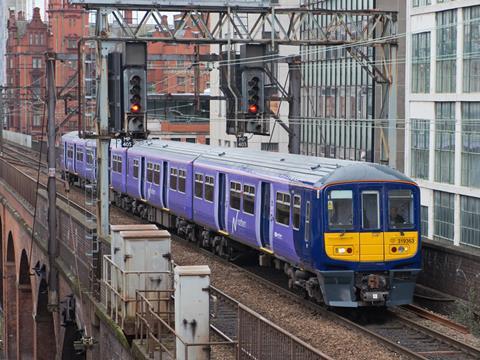
UK: Mayor of Greater Manchester Andy Burnham has published Our Prospectus for Rail, a masterplan developed by Transport for Greater Manchester on behalf of the Greater Manchester Combined Authority.
Burnham said that the prospectus could lead to a doubling of daily ridership in the regional centre to 200 000 by 2040, triple the use of Metrolink across the wider city region, deliver simple multimodal zonal ticketing and provide ‘locally accountable’ services.
The plan has two stages. Under the first stage to 2025, the existing local rail franchises would be reshaped to provide simpler services in the Greater Manchester travel-to-work area, and committed capacity enhancements would be delivered. Eight-car trains would call at lengthened platforms, more Metrolink LRVs would operate in pairs and there would be a pilot tram-train scheme.
In the second stage from 2025 a ‘GM Rail’ would be created to deliver locally-controlled rail services. High Speed 2 and Northern Powerhouse Rail would transform city-to-city links and release capacity on the conventional network. Metrolink would be expanded with new branches, extensions, the conversion of rail lines and tram-trains.
High-capacity, high-frequency rail services would be introduced on key commuter corridors, with the ambition of a minimum of four trains/h. This could be accompanied by the introduction of a more homogenous suburban rail fleet. A simpler service pattern would improve performance, although this may mean that passengers would need to change trains. A ‘Regional-Centre metro tunnel’ would provide additional capacity.
‘We need a fully integrated transport network that allows people to travel seamlessly between modes with simple, affordable ticketing’, said Burnham. He said he had ‘heard too many stories of people who have given up on trains because they just can’t rely on them to get them to work on time’, but ‘the success of Metrolink shows that you can deliver high-quality rail services when those who design and deliver them are close and accountable to the customers they serve’.



